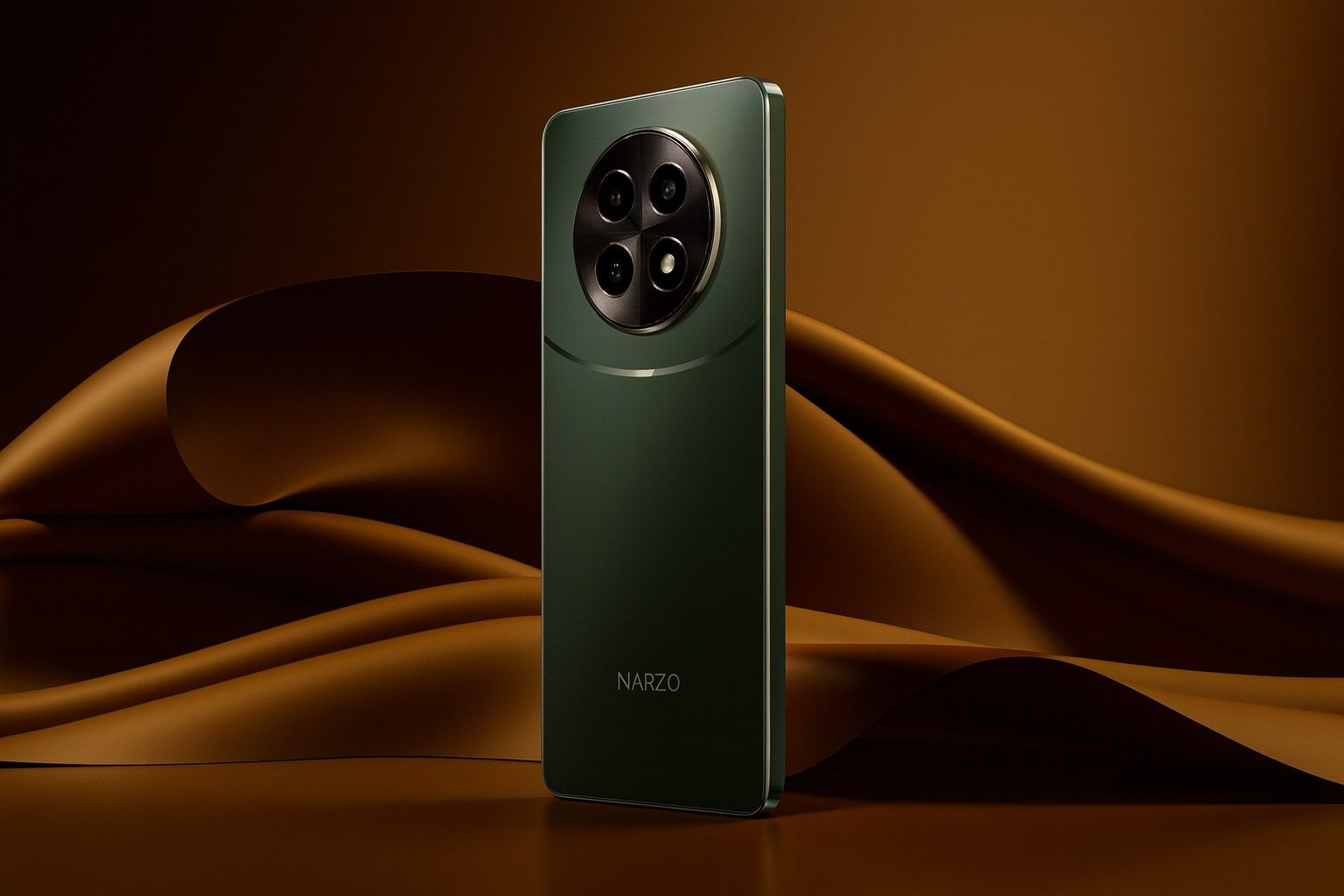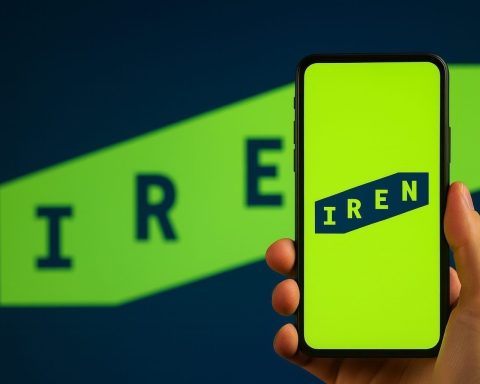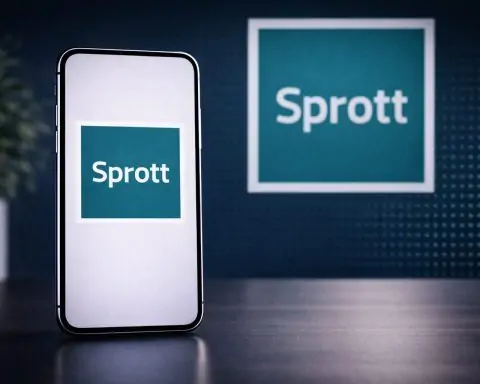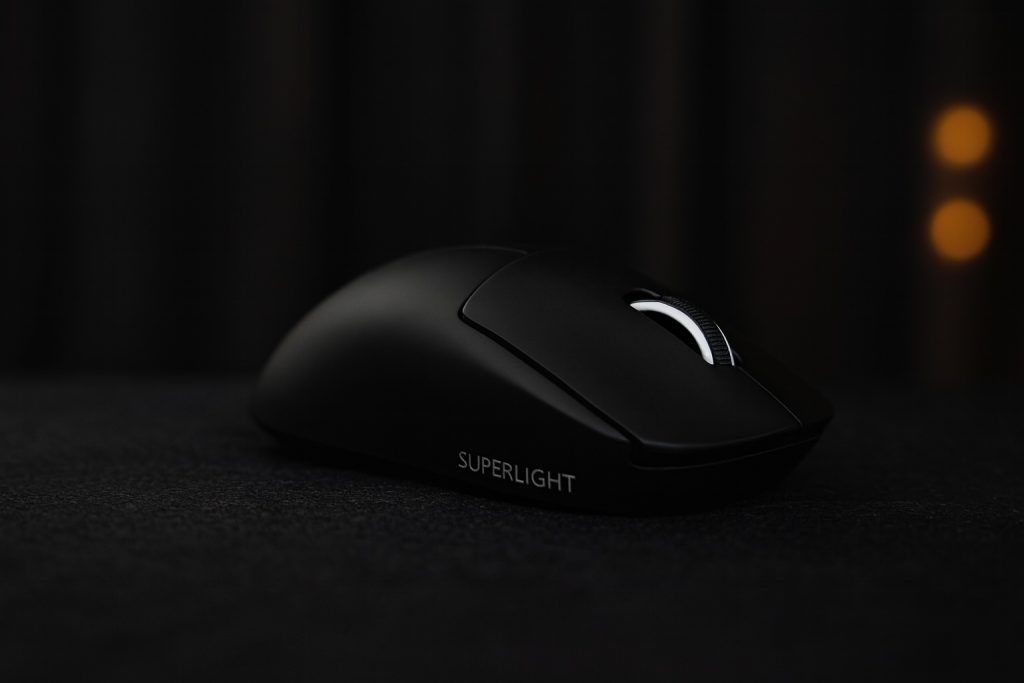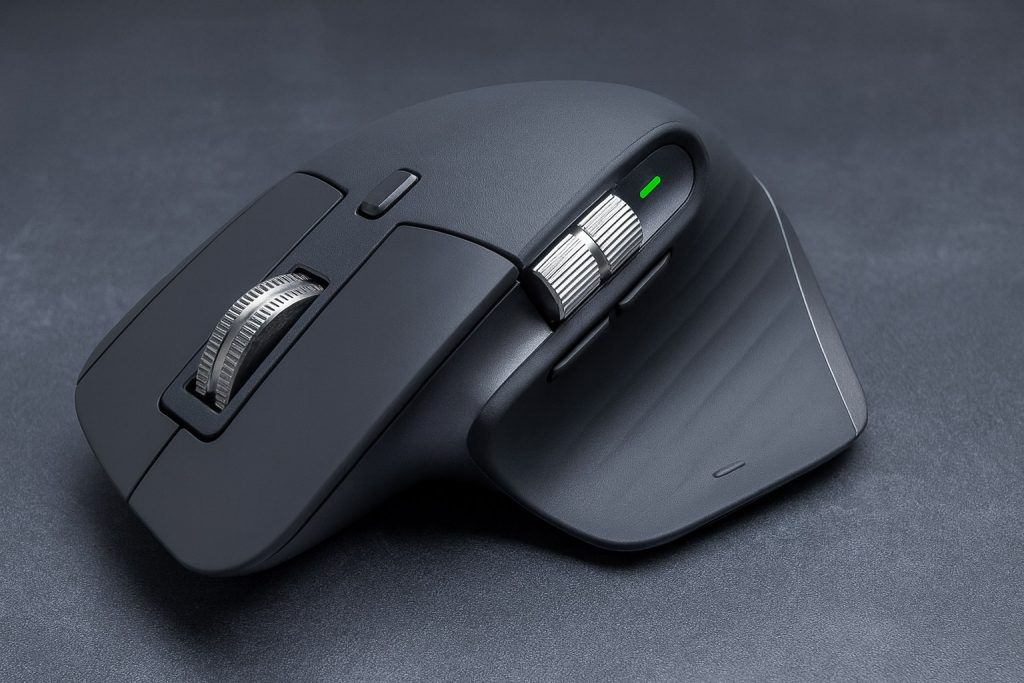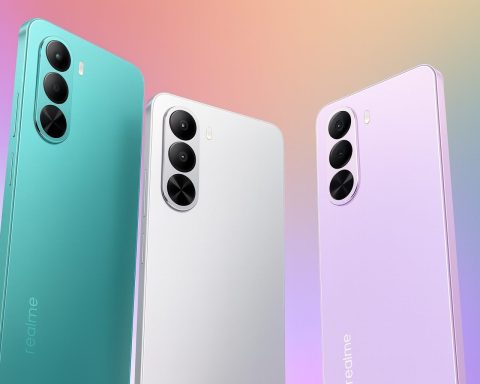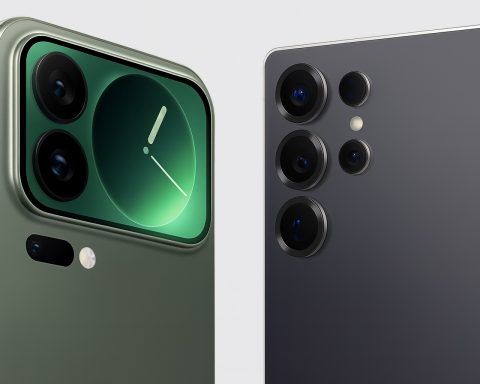- Poco X6 Pro uses MediaTek Dimensity 8300-Ultra (4nm) with about 1,300,000 AnTuTu score and features a 6.67-inch AMOLED display at 1220×2712, 120Hz, and Dolby Vision.
- Realme Narzo 70x 5G uses MediaTek Dimensity 6100+ (6nm) with around 404,000 AnTuTu score, and a 6.72-inch IPS LCD display at 1080×2400 with 120Hz and up to 950 nits brightness.
- Infinix Note 40 Pro uses MediaTek Dimensity 7020 (6nm) with around 462,000 AnTuTu score, and a 6.78-inch curved AMOLED display at 120Hz with about 1300 nits brightness.
- The Narzo 70x carries a dual rear camera with a 50MP main sensor and a 2MP depth sensor, with no ultrawide lens.
- The Poco X6 Pro features a triple rear camera setup: 64MP main with OIS, 8MP ultrawide, and 2MP macro.
- The Infinix Note 40 Pro uses a 108MP main sensor with 2MP macro and 2MP depth, and omits an ultrawide lens.
- Front cameras are 8MP on Narzo 70x, 16MP on Poco X6 Pro, and 32MP on Infinix Note 40 Pro, with 1080p video support across all.
- All three phones use a 5000 mAh battery; Narzo 70x achieved about 14 hours 19 minutes in PCMark endurance, Infinix Note 40 Pro about 13 hours 30 minutes, and Poco X6 Pro around 7–8 hours of screen-on time.
- Charging speeds are 45W for Narzo 70x (0–100% in about 65–70 minutes), 67W for Poco X6 Pro (0–100% in about 45–50 minutes), and 45W for Infinix Note 40 Pro (about 60–70 minutes), with some Note 40 Pro variants offering MagCharge wireless charging.
- Launch prices in India were ₹11,999 for the Narzo 70x (4+128GB) and ₹19,999 for the Poco X6 Pro (8+256GB), with the Infinix Note 40 Pro priced at ₹18,999 (8+256GB).
The mid-range smartphone segment is fiercely competitive in 2024–2025, especially in markets like India and Southeast Asia. Realme’s Narzo 70x 5G, Xiaomi’s Poco X6 Pro, and Infinix’s Note 40 Pro are three popular contenders that promise high value for money. Each phone targets budget-conscious buyers but with different emphases – from gaming performance to display quality to battery innovations. In this comprehensive comparison, we’ll dive deep into specifications, real-world performance, cameras, battery life, software experience, pricing, and even a peek at their upcoming successors. By the end, you’ll know how these phones stack up and which might be the best fit for your needs.
Quick Specs Comparison Table
To start, here’s a side-by-side overview of the key specifications of the Realme Narzo 70x, Poco X6 Pro, and Infinix Note 40 Pro:
| Feature | Realme Narzo 70x 5G | Poco X6 Pro | Infinix Note 40 Pro |
|---|---|---|---|
| Launch (India) | April 24, 2024 [1] | January 11, 2024 [2] | April 12, 2024 [3] |
| Design & Build | 7.69mm thin, 188g; Plastic frame; IP54 splash-proof [4] [5] | ~8mm, ~200g; Glass front (GG5), plastic frame; IP53 splash-proof [6] [7] | ~8.1mm, 190g; Curved display, Vegan leather back (optional); IP53 [8] [9] |
| Display | 6.72” IPS LCD, FHD+ (1080×2400), 120Hz, ~950 nits peak [10] [11] | 6.67” AMOLED, 1220×2712, 120Hz, Dolby Vision, ~1800 nits peak [12] [13] | 6.78” AMOLED (3D curved), 1080×2436, 120Hz, ~1300 nits peak [14] [15] |
| Processor (SoC) | MediaTek Dimensity 6100+ (6nm, octa-core up to 2.2GHz) [16] | MediaTek Dimensity 8300-Ultra (4nm, octa-core up to 3.35GHz) [17] | MediaTek Dimensity 7020 (6nm, octa-core up to 2.2GHz) [18] |
| RAM & Storage | 4GB/6GB/8GB LPDDR4X, 128GB UFS 2.2; Expandable up to 2TB microSD [19] [20] | 8GB/12GB LPDDR5X, 256GB/512GB UFS 3.1; No microSD [21] [22] | 8GB LPDDR4X, 256GB UFS 2.2; No microSD [23] [24] |
| Rear Camera | Dual: 50MP f/1.8 main + 2MP depth; no ultrawide; LED flash; up to 1080p video [25] [26] | Triple: 64MP f/1.8 main (OIS) + 8MP ultrawide + 2MP macro; dual LED flash; up to 4K@30fps video [27] [28] | Triple: 108MP f/1.75 main (OIS, 3× lossless zoom) + 2MP macro + 2MP depth; quad LED flash; up to 2K@30fps video [29] [30] |
| Front Camera | 8MP selfie, 1080p video | 16MP selfie, 1080p video | 32MP selfie, 1080p video (dual LED flash) |
| Battery | 5000 mAh, 45W SuperVOOC fast charging (0–100% ~65 min) [31] [32] | 5000 mAh, 67W turbo charging (0–100% ~50 min); no wireless [33] [34] | 5000 mAh, 45W fast charging; (MagCharge wireless charging available on some variants) [35] |
| OS & UI | Android 14, Realme UI 5.0; 2 years OS updates, 3 years security [36] | Android 14, HyperOS 1.0; 3 years OS updates, 4 years security [37] | Android 14, XOS 14; 2 years OS updates, 3 years security [38] |
| Audio | Mono speaker, 3.5mm headphone jack | Stereo speakers, 3.5mm jack (Yes) | Stereo speakers (JBL-tuned), no 3.5mm jack [39] [40] |
| Special Features | VC cooling chamber, Dynamic RAM expansion (+6GB) [41] | IR Blaster, NFC, IP rating for splash resistance | Curved screen & “Halo” RGB notification light ring [42]; optional leather back |
| Launch Price (India) | ₹11,999 (4+128GB) / ₹13,499 (6+128GB) [43] | ₹19,999 (8+256GB) launch; ~₹19,749 on Amazon now [44] | ₹18,999 (8+256GB) on launch/online [45] |
| Availability | India (Amazon exclusive), limited Asia launch | Global (India, Europe as Poco; China as Redmi variant) | India, Southeast Asia, Africa (wide offline presence) |
Table: Key specifications of Realme Narzo 70x 5G, Poco X6 Pro, and Infinix Note 40 Pro.
Performance & Processor
Chipset and Power: Each phone targets a different performance tier. The Narzo 70x is powered by the MediaTek Dimensity 6100+ – a 6nm chip with Cortex-A76 cores geared toward efficient everyday performance [46]. In benchmarks, its AnTuTu score is around 404,000, which is decent for an entry-level 5G device [47]. It handles daily tasks and moderate apps smoothly, but it’s the least powerful of the trio. Infinix steps things up with the Dimensity 7020 (also 6nm) featuring newer Cortex-A78 cores, scoring about 462,000 on AnTuTu [48] [49] – a 15% performance jump over the Narzo. This translates to snappier app launches and slightly better gaming on the Note 40 Pro. However, the true powerhouse here is the Poco X6 Pro’s 4nm Dimensity 8300-Ultra, which posts an impressive ~1,300,000 AnTuTu score [50] – roughly 3× the Narzo’s score. With its high 3.35 GHz prime cores and LPDDR5X RAM, the Poco X6 Pro can deliver near-flagship level performance for intensive workloads.
Gaming and Thermals: All three phones can handle popular games, but the experience differs. The Narzo 70x’s Mali-G57 MC2 GPU is fine for casual gaming at medium settings, though it’s not aimed at hardcore gamers. Infinix’s Note 40 Pro, with its IMG BXM-8-256 GPU and better CPU, offers smoother gameplay and can even sustain around 40–60fps in titles like PUBG Mobile (per reviews) with modest settings. The Poco X6 Pro clearly excels in gaming – reviewers note it “is great for gaming” and leaves many mid-range competitors behind with its raw performance [51] [52]. Demanding games run at high graphics and frame rates on the X6 Pro, thanks to that beefy chipset. However, all that power comes with heat: prolonged gaming can make the Poco run hot. In fact, one review flagged that the X6 Pro “gets hot during extended gaming sessions” [53], likely due to its higher 60.9% temperature increase in 30-minute stress tests [54] [55]. The Narzo 70x and Note 40 Pro run cooler by comparison (with far lower thermal buildup in tests), but that’s partly because they can’t push extreme frame rates to begin with. Thermal management is decent on the Narzo (it even has a vapor chamber, as Realme advertises [56]), so day-to-day use stays cool. The Note 40 Pro also remained comfortable during long video calls and streaming in a long-term test [57] [58].
Memory and Storage: Realme offers up to 8GB RAM on the Narzo 70x along with an interesting feature – Dynamic RAM Expansion up to +6GB using storage, which helps with multitasking [59]. More importantly, it’s the only phone here with a microSD slot (supporting up to 2TB cards) for easy storage expansion [60]. The Poco X6 Pro and Infinix Note 40 Pro both skip expandable storage, but they compensate by providing large built-in storage (256GB or more) out of the box. Poco even starts at 256GB UFS 3.1, which is faster storage than the UFS 2.2 on the Infinix. That means app installs and file transfers feel a tad quicker on the X6 Pro. RAM on the Poco is also newer generation (LPDDR5X vs LPDDR4X on the other two), aiding its zippy performance. In short, for raw speed and heavy multitasking or gaming, the Poco X6 Pro is the clear winner; the Infinix comes in as a solid mid-range performer, and the Narzo 70x is adequate for basic needs but not intended for power users.
Display & Design
Screen Technology: Display is one area where these phones differ significantly. Realme’s Narzo 70x uses a 6.72-inch IPS LCD panel. It’s a 120Hz Full HD+ display which is great to see at its low price – scrolling and animations are smooth, and Realme claims up to 950 nits peak brightness for usable outdoor visibility [61]. Reviewers have called the Narzo’s display “good” for the segment [62], although being LCD it lacks the punchy contrast of OLED screens. In contrast, both Poco X6 Pro and Infinix Note 40 Pro sport AMOLED displays. The Poco’s 6.67-inch AMOLED is especially noteworthy: it has a sharper 1220p resolution and can hit an eye-searing 1800 nits peak brightness [63]. It even supports Dolby Vision, making it excellent for HDR video content [64]. One review noted the X6 Pro uses the same high-end panel as a Redmi Note 13 Pro+ and called it “one of the best displays in the segment” [65]. The Infinix Note 40 Pro also impresses with a big 6.78-inch curved AMOLED that reaches 120Hz refresh. Its peak brightness around 1300 nits is not far behind the Poco [66]. While it lacks HDR streaming support on Netflix, the Note 40 Pro’s screen was praised for superb contrast and even HDR playback on YouTube [67] [68]. Plus, it’s a 10-bit panel with high-frequency PWM dimming, which is rare at this price [69]. Overall, if you want the absolute best display, the Poco X6 Pro wins by a margin (higher resolution and brightness, HDR support). The Infinix’s display is a close second, offering that immersive curved design. The Narzo’s LCD is smooth and bright for an LCD, but can’t match the color richness or deep blacks of the other two.
Design & Build Quality: All three devices punch above their weight in design, but the Infinix Note 40 Pro turns the most heads. It adopts a design language previously seen only in flagship phones – a 3D curved front glass (Gorilla Glass) and even an option for a vegan leather back finish [70] [71]. This gives it a premium look and feel; one long-term user noted many people assumed the Note 40 Pro was an “expensive flagship” based on its sleek appearance [72]. The phone has an attractive slim profile and well-balanced weight (190g), though note that it lacks a headphone jack (Infinix provides a USB-C to 3.5mm dongle in the box for audio). Infinix also added a unique “Halo” notification light – a small LED ring on the camera bump that can glow in customizable colors for calls, messages, or music, which is a cool touch for personalization [73]. The Poco X6 Pro sticks to a more familiar design: flat display (with Gorilla Glass 5 protection), plastic frame, and glass back. It is splash-resistant (IP53 rating) and even has an IR blaster on top. The X6 Pro’s design was received well – one reviewer highlighted its “attractive design” as a pro [74]. While it doesn’t have curves, it feels solid and premium enough, and importantly it includes stereo speakers and retains the 3.5mm headphone jack for audio flexibility. The Realme Narzo 70x, being the budget device here, has a simpler construction (plastic back and frame) but Realme did make it notably thin (7.7mm) and light (188g) [75] [76]. It’s actually the slimmest phone of the trio, which makes it comfortable to hold. The Narzo 70x also has an IP54 splash-proof rating [77], so it can survive minor splashes or rain. Its design is described as functional but “uninspiring” by some experts [78] – available in subtle Misty Green or a bluish white, with a flat back and slightly raised camera island. It’s not a head-turner, but certainly not bad for its price.
In summary, the Infinix Note 40 Pro stands out for its ambitious design (curved AMOLED, leather finish, RGB light) giving true premium vibes in mid-range. The Poco X6 Pro offers a balanced, sturdy build with useful extras like Gorilla Glass protection and stereo sound. The Realme Narzo 70x keeps things slim and simple – great for one-handed use – but its design is the most utilitarian of the three.
Camera Systems & Image Quality
On paper, the camera setups differ in philosophy: the Infinix goes for a high-resolution main sensor, Poco offers a more well-rounded triple camera including an ultrawide, and Realme sticks to the basics.
Rear Cameras: The Realme Narzo 70x has a dual-camera system: a 50MP f/1.8 main shooter and a 2MP depth sensor for portraits [79]. There’s no ultrawide or dedicated macro lens here, which is expected in its budget class. Realme’s 50MP sensor can capture decent daytime shots – sharp and vibrant enough for social media. However, low-light performance and dynamic range are limited. Reviewers note the Narzo’s camera is “good enough to share social media photos”, but “won’t win any awards” [80] [81]. Essentially, it’s a serviceable camera in good light, but don’t expect miracles at this price. The absence of any ultrawide means the Narzo is the least versatile for photography (you can’t capture wide landscapes or big group shots without stepping back).
The Poco X6 Pro steps up the game with a triple camera array: a 64MP primary camera with OIS, an 8MP ultra-wide, and a 2MP macro lens [82]. The 64MP sensor (likely a Sony IMX or OmniVision unit) with optical stabilization gives the Poco a clear advantage for main photos and video stability. In daylight, the Poco’s main cam produces detailed photos with good dynamic range. Low-light shots also benefit from OIS, reducing blur. That said, the camera still isn’t class-leading – one review mentioned the overall camera quality “could be better” and that the auxiliary cameras are weak [83] [84]. The 8MP ultrawide is handy for fitting more in the frame, but its image quality is just average (it struggles in low light and lacks detail compared to the main camera). The 2MP macro is fun for close-ups but low resolution. Video recording on the X6 Pro maxes out at 4K 30fps – footage is okay, though notably it doesn’t support 4K 60fps and the quality is “strictly average” according to Android Central [85]. Still, among these three phones, the Poco has the most versatile camera setup, covering wide-angle shots and macro in addition to decent main camera performance.
The Infinix Note 40 Pro also has a triple camera, but configured as 108MP main + 2MP macro + 2MP depth [86]. Infinix interestingly did not include an ultrawide lens – a decision noted as a downside by critics [87]. Instead, they bank on the high-resolution 108MP sensor (which supports 3x lossless digital zoom thanks to all those pixels) [88]. This sensor is paired with OIS, which helps a lot in low-light and for steady shots. Daylight photos from the Note 40 Pro’s main camera are actually quite good – you get plenty of detail and relatively punchy colors. You can also zoom up to 3x and still get usable shots due to the “lossless” crop from 108MP. However, the lack of a true ultrawide limits your framing options just like on the Narzo. The included 2MP macro is more filler than functional, and the 2MP depth helps with portrait blur. In practice, reviewers found the Note 40 Pro’s camera to be “alright, especially if you just want pictures for Instagram and Snapchat.” It handles daylight well and has an effective Portrait mode [89] [90]. In low light, it has a night mode, but the results are average – “does not achieve good clarity” in very dim scenes [91]. One big plus: the Note 40 Pro has a Quad-LED flash, which can be useful for night shots or as a fill light. It also uniquely offers some fun camera features in the app (like an AI sky replacement and built-in document scanning). But overall, the Note 40 Pro’s camera setup, aside from the high-res main sensor, is quite limited – the omission of an ultrawide lens is a clear compromise to keep costs down [92].
Front Cameras: For selfies and video calls, Infinix actually leads with a 32MP front camera, versus 16MP on the Poco and a modest 8MP on the Narzo. The selfie quality on the Narzo 70x is just passable – 8MP can capture fine details in good lighting, but struggles in low light and has no front flash. The Poco X6 Pro’s 16MP selfie cam is sharper and can record 1080p video; it produces nice selfies with Xiaomi’s usual AI beauty filters available. The Infinix Note 40 Pro not only has the highest resolution selfie shooter (32MP), but also dual LED flash on the front tucked in the top bezel [93]. This is great for illuminated selfies or video calls in dark environments – a rare feature. Selfie image quality on the Infinix is quite good, with the high resolution capturing a lot of detail and the option to use screen flash or the LED for night selfies. For vlog-style videos, all three are limited to 1080p from the front camera.
In summary, the Poco X6 Pro offers the most well-rounded camera experience (with a usable ultrawide, stabilized main camera, and acceptable quality). The Infinix Note 40 Pro can capture the most detail with its 108MP sensor and takes solid photos, but is let down by the lack of an ultrawide lens. The Realme Narzo 70x is a step below both in camera versatility and low-light performance – it’s fine for basic shots but clearly a budget setup. If camera capability is a priority, Poco takes the lead among these three, while Narzo comes in last. All three will do the job for casual photography and social media, but enthusiasts will quickly find their limits.
Battery Life & Charging
Big batteries are a staple of mid-range phones, and all three deliver all-day battery life with 5,000 mAh capacity. The differences lie in charging speed and endurance under heavy use.
Battery Endurance: In everyday scenarios, each phone easily lasts a full day of moderate use (social apps, web browsing, some video and music). The Realme Narzo 70x, despite its slim profile, doesn’t compromise on battery – its 5,000 mAh cell coupled with the efficient Dimensity 6100+ gives it excellent longevity. In fact, one battery test showed the Narzo 70x achieving about 14 hours 19 minutes on a screen-on endurance test (PCMark) [94], which is slightly better than the Infinix’s result of ~13.5 hours [95]. That means the Narzo can push past a day and a half on light use. The Poco X6 Pro, with its more power-hungry processor and brighter screen, still manages stellar battery life as noted by reviewers [96]. Xiaomi’s optimizations and the large battery let the X6 Pro comfortably last through a day of heavy use; some users report around 7-8 hours of screen-on time, which is on par with the best in this class. The Infinix Note 40 Pro also holds up well – its AMOLED screen and 6nm chip are power-efficient. Most users will end the day with charge to spare on the Note 40 Pro; one long-term review praised that it handled hours of streaming and video calls without battery anxiety [97]. It’s safe to say all three phones meet the “all-day battery” bar, with the Narzo 70x and Poco X6 Pro lasting a tad longer than the Infinix under comparable usage (likely because the Note 40 Pro’s curved AMOLED and always-on features like the Halo LED incur a bit more standby drain).
Fast Charging: When you do need to top up, Realme and Poco offer the fastest charging here. The Narzo 70x supports 45W SuperVOOC charging, which Realme claims can charge 50% of the battery in around 30 minutes. A full 0–100% charge takes about 65–70 minutes in real-world tests [98]. Impressively, Realme includes the 45W fast charger in the box, so you can take advantage of that speed right away. The Poco X6 Pro goes further with 67W Turbo charging. With the bundled 67W charger, the Poco juices up extremely quickly – around 50% in just 15–20 minutes, and a full charge in roughly 45–50 minutes [99]. This is one of the fastest in its price range; Xiaomi/POCO’s MI Turbo Charge technology also monitors battery health while charging at high speed. The Infinix Note 40 Pro (5G version) supports 45W fast charging, similar to the Narzo. It’s a bit confusing because some global (4G) variants of the Note 40 Pro actually came with 70W chargers, but the 5G model sold in India/Asia uses 45W to balance thermals. In practice, expect roughly 1–1.2 hours for a full charge on the Note 40 Pro at 45W. One standout feature: certain Note 40 Pro variants support wireless charging (Infinix branded “MagCharge”). The 4G model had 20W wireless charging, and the newer Note 50 series shows Infinix doubling down with 30W wireless on budget devices [100]. The Note 40 Pro 5G’s support for wireless charging is not clearly advertised (and 91mobiles did not list it, implying it may have been dropped on the 5G unit), so this feature might depend on the region. Nonetheless, Infinix deserves credit for introducing wireless charging in the sub-$300 segment – a rarity that neither Realme nor Poco offer in these models.
Battery Optimization and Thermals: All three phones have AI battery management and modern software that reduces background drain. Realme’s and Xiaomi’s UIs offer “Super Power Saving” modes to stretch the last 5% if needed. Infinix touts a “unique battery management chip” in the Note 40 Pro that works with their OS to extend battery lifespan and efficiency [101]. In terms of heat, none of these phones show concerning warmth during charging – the Poco gets slightly warm with 67W but has proper heat dissipation. The Narzo’s vapor chamber helps keep charging temps lower, and Infinix’s BMS chip likely manages heat during charging as well.
In summary, Poco X6 Pro charges the fastest by a noticeable margin, whereas the Narzo 70x and Infinix Note 40 Pro are comparable in charging speed (fast, but not class-leading). All three have solid battery life, with the Narzo and Poco having a slight edge in longevity. Power users will appreciate Poco’s speedy top-ups and reliable endurance, while even the budget Narzo can boast a better battery life than many pricier phones [102].
Software & User Experience
Software can greatly affect the day-to-day experience, and here we have three different Android skins: Realme UI, Xiaomi’s new HyperOS (on Poco), and Infinix’s XOS.
Android Version and Updates: The good news is all three phones launched with the latest Android 14 out of the box (a commendable feat in early 2024) [103] [104]. Realme’s Narzo 70x and Infinix’s Note 40 Pro both come with their Android 14 custom skins (Realme UI 5.0 and XOS 14 respectively). Poco X6 Pro debuted Xiaomi’s brand-new HyperOS 1.0, which replaces MIUI, also on Android 14 [105]. In terms of update policy, Poco clearly offers the best commitment: 3 years of major Android OS updates and 4 years of security patches [106]. That means the X6 Pro should get upgrades up to Android 17 and security updates till 2028 – excellent longevity for a mid-range device. Realme promises 2 years of OS updates and 3 years of security updates for the Narzo 70x [107], which is decent in the budget class (taking it up to Android 16 by 2026). Infinix similarly provides around 2 Android version updates and 3 years of security patches for the Note 40 Pro [108] [109]. Infinix isn’t known for speedy updates, but at least Android 15 and 16 should arrive for the Note 40 Pro eventually. Overall, Xiaomi/Poco leads in software support here, potentially giving the X6 Pro a longer life.
UI and Features:Realme UI 5.0 on the Narzo 70x is a feature-rich skin with many customization options. It offers things like theming, an enhanced always-on display (though on an LCD it’s not true always-on), and practical tools (split-screen, game mode, etc.). However, it is not a stock Android experience – there’s a fair amount of pre-loaded apps and “Hot Apps/Hot Games” recommendations baked in. Users have noted the presence of an App Market that sends frequent notifications, which can be annoying [110] [111]. So while Realme UI runs smoothly and is quite user-friendly, be prepared to disable or ignore some bloatware. On the plus side, Realme UI’s customization and optimization are quite good for performance; the Narzo 70x feels snappy in general navigation and the UI didn’t stutter even with its mid-range hardware, according to reviews.
HyperOS 1.0 on the Poco X6 Pro is Xiaomi’s revamped software, aiming to clean up MIUI’s legacy. HyperOS is said to be lighter and more coherent. It still has the MIUI DNA, so you get features like Second Space, a robust theme store, and extensive system controls. Importantly, HyperOS on the X6 Pro is built on Android 14 from day one [112] – something even many flagships in early 2024 didn’t have. The experience includes tons of functionality (app lock, video tools, etc.), and Xiaomi has reduced some of the ad spam that MIUI was notorious for. That said, bloatware is still present – the X6 Pro ships with a slew of pre-installed apps and games (some can be uninstalled). Android Central noted there were “plenty of bloatware out of the box” on the X6 Pro [113]. The UI is also not as polished as stock Android; one 91mobiles review mentioned the UI “still needs improvement,” citing occasional quirks or feature overload [114]. On the bright side, HyperOS is quite stable and fast, and Xiaomi promises better optimization and fewer ads going forward. Also, Poco devices typically allow unlocking the bootloader easily for those who want to tinker or flash custom ROMs.
Infinix XOS 14 is probably the least known UI here, but it’s feature-packed in its own way. XOS 14 on the Note 40 Pro comes with a distinctive look – colorful icons and smart assistants. Infinix includes its Folax AI assistant integrated into the system (triggerable via a power key long-press) [115]. Folax can do on-screen recognition, translate text, and answer queries – ambitious features that you rarely see in budget phones [116]. XOS also offers a “Floating Windows” feature allowing up to 3 apps in floating multitasking, which a reviewer found useful and smooth on the Note 40 Pro [117] [118]. Infinix tends to include various utility apps (like phone clone, social turbo for WhatsApp enhancements, etc.). There is some bloatware as well, though not excessively harmful – mostly additional apps that can be ignored. A downside of XOS is that it doesn’t have the brand polish of Realme or Xiaomi’s ecosystems – for example, firmware updates might be slower, and some translations/UI elements can feel rough around the edges. But XOS has improved over the years, and the Note 40 Pro’s experience was largely positive: the OS was stable with no lag in daily use as one 8-month user reported [119]. Infinix also adds fun features like special themes, the mentioned Halo notification light controls, and even health tracking via the phone (the Note 40 Pro can measure SpO2 and heart rate using the camera and sensors, per Infinix’s notes). These are unique value-adds in the software.
Bloatware and Ads: A common theme in this price bracket is the presence of pre-installed apps and occasional ads or promotional notifications. Realme UI has the Hot Apps/Games folders and daily app recommendations (which you can turn off). MIUI/HyperOS historically had ads in system apps (like Cleaner, installer) – it’s not clear if HyperOS completely removed them, but the bloatware suggests some remain. Poco does allow skipping some recommended content during setup. Infinix XOS sometimes shows the “Phoenix” browser news feed or app suggestions too. In short, none of these offer a Pixel-like clean Android, but they do give you a lot of features. If a minimal, bloat-free experience is your priority, you might lean towards brands like Motorola or Nokia in this range instead. Otherwise, after some tweaking (disabling unwanted notifications, uninstalling what you can), all three UIs can be made to behave well.
User Experience Highlights: In daily use, all three phones provide a smooth experience for typical tasks. The high refresh-rate displays make interactions fluid. Fingerprint sensors (side-mounted on Narzo and Note 40 Pro, in-display on Poco X6 Pro) are fast and reliable. Call quality and connectivity (5G, VoLTE, etc.) are solid on all; the Narzo 70x and Note 40 Pro support the essential 5G bands for India/Asia, while Poco X6 Pro, being global, has wide 5G band support too. The stereo speakers on Poco and Infinix add to a richer media experience – the X6 Pro’s speakers are loud and even support Dolby Atmos, and Infinix’s are tuned by JBL which is a nice touch [120]. The Narzo’s single speaker is just average in comparison. Haptic feedback is another point: Poco X6 Pro has a decent X-axis linear motor, giving crisp vibrations (e.g., typing feels nice), Infinix Note 40 Pro also has improved haptics over the non-Pro variant [121], while the Narzo’s haptics are relatively basic. All three have face unlock in addition to fingerprint, which works quickly in good lighting.
To sum up software: Poco’s HyperOS offers the longest updates and plenty of features, but still carries bloat – it’s powerful but could use some streamlining [122]. Realme UI is feature-rich and smooth, but has some spammy elements that detract from an otherwise good experience [123]. Infinix XOS is surprisingly full of tricks (AI assistant, floating windows) and has shown itself to be stable; it’s just a bit less refined, though it introduces innovative features uncommon in this segment. Each UI has a learning curve if you’re coming from another brand, but Android 14 underpins them so you get modern features like privacy indicators, digital wellbeing, etc., regardless of the skin.
Pricing & Availability
Launch Prices (India): When they launched in early 2024, these phones spanned different price bands. The Realme Narzo 70x 5G was squarely in the budget range, starting at ₹11,999 for the 4GB+128GB model [124]. (Realme offered an early-bird discount down to ₹10,999 during the first sale [125], which made it an even more aggressive deal.) The 6GB+128GB variant debuted at ₹13,499 [126]. These prices put the Narzo 70x in competition with other under-15k INR phones like Redmi 13 5G and Moto G54. The Poco X6 Pro launched at a mid-range price – in India it was around ₹19,999 for the base 8GB+256GB (some regions also had a 8+256 and 12+512GB options) [127]. Street prices have since fluctuated; as of August 2025, the Poco X6 Pro (8+256) can be found around ₹18–20k online [128], which is excellent value given its specs. The Infinix Note 40 Pro 5G launched at ₹18,999 for its sole 8GB+256GB configuration [129], positioning it just below the Poco. Infinix often prices aggressively, and indeed undercut some rivals with the Note 40 Pro given its features like the curved AMOLED and 108MP camera. In other markets (e.g., Southeast Asia, Middle East, Africa), the pricing of these phones followed similar tiers – Narzo 70x (or its equivalent model) was roughly around USD $150-180, Infinix Note 40 Pro around $230-250, and Poco X6 Pro around $270-300 at launch.
Availability: The Realme Narzo series has traditionally been India-focused. The Narzo 70x was sold via Amazon India and Realme’s website, and it might not be officially available in many Western markets. However, Realme sometimes rebrands these devices for other regions – for example, the Narzo 70x hardware is very similar to the Realme 11x 5G launched in some countries, and Realme could use different names for Latin America or Europe. Still, primary availability of Narzo 70x was in India (and possibly select Southeast Asian countries through online channels). Poco, being a sub-brand of Xiaomi, had a much wider release. The Poco X6 Pro was available in India, Europe, and other Asian markets, and it corresponds to a model in China (the Redmi Note series or Redmi Turbo, etc.). In Europe, Xiaomi offered it as an affordable mid-ranger through online stores. The Poco X series is one of Xiaomi’s global hits, so finding the X6 Pro (or its close sibling models) outside India was feasible. The Infinix Note 40 Pro was primarily targeted at emerging markets in Asia and Africa. Infinix doesn’t have presence in the US/EU, but in countries like India, Indonesia, Philippines, Nigeria, Kenya, etc., Infinix phones are readily available through both online (Flipkart, etc.) and offline retailers. In India, the Note 40 Pro sold via Flipkart and offline stores. In Africa, Infinix is a top brand and the Note 40 Pro was widely promoted there (Tech reviewers in Kenya, for instance, had the phone by April 2024 [130]).
Current Market Status (August 2025): As of now, the Realme Narzo 70x has been succeeded by newer models (Narzo “80” series – more on that below), and it might be hard to find new. It often went out of stock after its run [131]. You might find it in second-hand or clearance sales under ₹10k, but Realme’s focus has moved on. The Poco X6 Pro, given its popularity, saw price cuts and remains a terrific bargain if you can still find inventory. Many users and reviewers in 2025 still cite it as a strong choice under $300. Xiaomi did release the Poco X7 series in early 2025 (with higher specs and higher price), so X6 Pro might gradually phase out once X7 Pro saturates the market. The Infinix Note 40 Pro is also likely on clearance as the Note 50 series launched in mid-2025. Infinix phones tend to drop in price over time, so by late 2024 the Note 40 Pro was sometimes on sale for as low as $200 in some regions. By 2025, it’s probably replaced by Note 50 or Note 50 Pro in stores. That said, its unique features keep interest in it alive; some budget buyers specifically look for the Note 40 Pro if they want a curved display at a low price.
Regional Considerations: In India, all three brands compete hard. Realme and Infinix often cater to the online-first crowd with flash sales. Xiaomi (Poco) has strong offline distribution as well. In Southeast Asia, Xiaomi and Infinix have strongholds (with Infinix being big in certain countries like Pakistan, Indonesia for budget phones). Realme is also present and popular in SEA with its numbered series more than Narzo. If you’re in Europe or North America, Poco X6 Pro (or its Xiaomi equivalent) would be the only one among these officially accessible – Narzo and Infinix would need to be imported.
One more thing on pricing: each phone’s value proposition is slightly different. The Narzo 70x was one of the most affordable phones with 5G and 45W charging at launch – Realme advertised it as the fastest charging under ₹12K [132]. Poco X6 Pro offered near-flagship specs at a mid-range price, making it a bang-for-buck champion (Android Central even called it “the best option in Xiaomi’s sub-$400 portfolio” at the time [133]). Infinix Note 40 Pro’s value was in offering premium design and features (curved AMOLED, wireless charging) at under ₹20K, taking on rivals like Tecno and Samsung’s lower A-series. Depending on promotions, each could be a steal – e.g., Narzo 70x during festive sales in India came with bank offers bringing it close to ₹10K for the higher variant, Poco often had bundle discounts on Flipkart, and Infinix gave free accessories with Note 40 Pro early on.
Pros and Cons of Each Phone
Before the final verdict, let’s summarize the strengths and weaknesses of each device:
Realme Narzo 70x 5G – Pros:
- Affordable Price: Among the three, the Narzo 70x is the cheapest, delivering 5G and high-end features (120Hz, fast charging) in the budget segment [134].
- Smooth 120Hz Display: It has a large 6.72″ 120Hz screen that is bright and fluid for everyday use, a standout at this price [135].
- Good Battery Life: The 5000mAh battery easily lasts a full day (often more) thanks to the efficient chipset, and 45W charging quickly fills it up [136] [137].
- Decent Performance for Daily Tasks: The Dimensity 6100+ with Realme UI offers respectable performance for apps, multitasking, and casual gaming – it “offers smooth performance” for the price [138].
- Slim and Lightweight Design: At under 8mm thick and 188g, it’s comfortable to handle, yet still packs stereo-ready audio (with 3.5mm jack) and an IP54 splash resistance for durability [139].
Realme Narzo 70x 5G – Cons:
- Average Camera Quality: The 50MP dual camera system is just average. There’s no ultrawide lens, and the image quality, especially in low light, trails the other two phones. Reviewers note the cameras “need improvement” [140].
- Uninspired Design: While slim, the design is plain plastic and doesn’t stand out. It lacks premium touches (no glass or fancy finishes), and looks a bit generic – an expert rated the design as a letdown [141].
- Bloatware in Software: Realme UI, though feature-rich, comes with many pre-installed apps and spammy notifications (e.g., Hot Apps recommendations) that detract from the user experience [142].
- Not Meant for Heavy Gaming: The mid-tier GPU and limited thermal headroom mean this isn’t a phone for graphics-intensive gaming or advanced camera processing. It can lag under heavy stress which the other two handle better.
- Limited Availability Globally: Officially sold mainly in India; those outside Asia may have difficulty purchasing it except via import or under a different model name.
Xiaomi Poco X6 Pro – Pros:
- Class-Leading Performance: The Dimensity 8300-Ultra chipset delivers flagship-like performance in this price range. The X6 Pro is “worth considering… especially for power users,” easily outpacing competitors in speed [143]. Great for gaming and multitasking.
- Superb 120Hz AMOLED Display: It boasts a high-resolution, ultra-bright AMOLED (with Dolby Vision) that reviewers hailed as one of the best in class [144]. Consuming content on this HDR-capable, 1800-nit panel is a joy.
- Long Battery & Fast Charging: The 5000mAh battery offers stellar endurance, and the 67W TurboCharge fills it in under an hour [145]. You get both all-day battery life and the convenience of very quick top-ups.
- Stereo Speakers + IR Blaster: Dual speakers produce loud stereo sound (with Dolby Atmos support) – great for media and games. Plus Xiaomi includes useful extras like an IR blaster (to control TVs/ACs) which others lack.
- Premium Build & Features: Gorilla Glass 5 protection, IP53 splash resistance, and an attractive design are all pros [146] [147]. The phone feels solid, and small touches like X-axis haptics and the 3.5mm jack add to the appeal. Xiaomi also promises 3 Android updates, giving it longevity [148].
Xiaomi Poco X6 Pro – Cons:
- UI Bloat and Ads: HyperOS is powerful but the phone ships with a lot of pre-loaded apps. Some spammy notifications and ads in system apps persist, requiring cleanup by the user [149]. The software experience isn’t as clean as it could be.
- Gets Warm Under Load: The powerful SoC can run hot. During heavy gaming or 4K video recording, the device warms up noticeably (thermal throttling can occur in very long sessions) [150]. A trade-off of the high performance.
- Camera Not the Best in Class: While versatile, the camera setup is middle-of-the-road for the price. The 64MP main cam is decent but not a huge leap over cheaper phones; the ultrawide is only 8MP and the macro is low-res. Low-light and video are just average [151] [152]. Competing phones like Samsung’s might have slightly better camera systems in this tier.
- No Expandable Storage: With 256GB base this isn’t a big issue, but there’s no microSD slot, so you’re confined to internal storage. The top model’s 512GB should be plenty for most, though.
- Price Creep in Some Regions: By 2025, newer models (Poco X7 Pro, etc.) have come, and while the X6 Pro is cheaper now, in some markets it might be scarce. Its original pricing was excellent, but if you can’t find it, the alternatives might cost more.
Infinix Note 40 Pro – Pros:
- Gorgeous Curved AMOLED Display: The Note 40 Pro offers a rare curved 6.78″ AMOLED screen at a midrange price. It’s 120Hz, vibrant, and bright (~1300 nits). The immersive curve and slim bezels give a truly premium viewing experience [153] [154].
- Premium Design Flair: From the vegan leather back (Titan Gold edition) to the Halo RGB lighting around the camera, this phone’s design turns heads. It “exudes a premium vibe,” often being mistaken for a high-end flagship in looks [155]. Build quality (Gorilla Glass front, solid frame) is excellent for its segment.
- Wireless Charging & Battery Features: It is one of the very few in its class with wireless charging support (MagCharge). Even though the wired 45W isn’t the fastest, having 15-20W wireless capability at this price is a huge convenience and USP. Infinix also includes a special battery management chip to prolong battery health [156].
- Adequate Performance: The Dimensity 7020, while not a powerhouse, delivers a satisfactory performance for most users [157]. The phone feels smooth in daily use, handles multitasking (aided by 8GB RAM) and can do casual gaming without lag. It offers a good balance of power and efficiency (and doesn’t overheat).
- Feature-Rich Software: XOS 14 packs in a lot: a built-in AI assistant (Folax), floating window multitasking, document scanner, social turbo features, etc. It’s quite innovative – you get things like heart rate monitoring via the phone’s sensors, which are unheard of at this price. Also, the phone has integrated JBL-tuned stereo speakers, adding to the media experience [158].
Infinix Note 40 Pro – Cons:
- No Ultrawide Camera: Infinix skipped an ultrawide lens, which is a notable omission in a “Pro” device [159]. The camera setup (108MP+2+2) lacks versatility – you won’t be able to take wide group shots or expansive landscape photos as you could with the Poco.
- Non-Expandable Storage: Like the Poco, the Note 40 Pro doesn’t support microSD expansion. 256GB is generous, but the lack of expansion could be a downside for those who like having the option (especially since prior Infinix models often had it).
- Software Polish and Updates: XOS, while feature-rich, isn’t as refined as some competitors’ UIs. There are a few pre-installed apps and occasional quirks. Infinix’s update track record is improving but still not as reliable – only 2 years of updates are guaranteed, and they tend to be slower with Android upgrades than Realme/Xiaomi [160].
- Camera Limitations: Aside from no ultrawide, even the 108MP main camera, though high-res, isn’t a magic bullet. Night mode is just average, and video recording tops out at 2K 30fps with mediocre stabilization. There’s also no 4K video option. Essentially, camera performance is good but not class-leading – some similarly priced phones might offer a better overall camera system (with an ultrawide or higher-quality secondary lenses).
- Availability & After-Sales: Infinix’s market presence is mostly in Asia/Africa. Depending on your region, after-sales support (like service centers, warranty) may not be as robust as more established brands. Accessories like cases can be harder to find. And if you’re outside the target markets, you might not get this phone at all except via import.
Verdict & Future Outlook
All three of these smartphones offer strong value propositions, but for slightly different target audiences:
- Realme Narzo 70x 5G is the budget all-rounder. It’s an ideal choice if you have a tight budget (around ₹12K or $150) but still want a modern smartphone with 5G, a high-refresh display, and fast charging. It covers the fundamentals well – performance is smooth enough for everyday use, battery life is great, and the display is large and fluid. Its compromises are in camera and premium features, which is acceptable at its price. As one reviewer put it, “for less than ₹15,000, it offers smooth performance and a large 120Hz display… the Narzo 70x is a good choice for those looking for a decent-performing phone without burning a hole in their wallet.” [161] [162] If you’re an avid photographer or heavy gamer, you’ll want to spend more, but for students, casual users, or as a second phone, the Narzo 70x is a satisfying budget pick.
- Xiaomi Poco X6 Pro emerges as the performance-oriented mid-range champion. It’s perfect for power users, gamers, and anyone who wants near-flagship specs at a mid-tier price. The X6 Pro really has no major weakness in hardware – fantastic display, top-notch performance, good battery and fast charging, plus extras like stereo speakers. Its downsides are mainly in the software (bloatware and UI polish) and a camera that, while versatile, isn’t exceptional. But considering its price, it’s hard to beat. As Android Central’s verdict stated, “the result is a device that’s much better than its predecessor… internal hardware is noticeably faster, the phone is great for gaming, and you get a decent camera along with stellar battery life and fast charging… the X6 Pro [offers] great overall value.” [163] [164] This phone will appeal to tech enthusiasts on a budget, and it remained one of the best bang-for-buck phones of 2024. Even in 2025, it holds its own against newer mid-rangers.
- Infinix Note 40 Pro stands out as the style and innovation choice in the mid-range. It’s aimed at users who appreciate design and unique features, and want a taste of flagship perks without paying a flagship price. The curved AMOLED, premium look, and features like wireless charging make it special. It covers the core experience too – performance is solid and battery life is dependable. It’s really suited for someone who might say: “I want a phone that feels premium and different, but I can’t spend more than ~$250.” However, you should be okay with the trade-offs (no ultrawide camera, slightly less known software). An 8-month review aptly summarized that the Note 40 Pro’s enhancements “complement [its] appealing design and reliable performance across the board” and aside from missing an ultrawide and SD card, “the phone delivers on many aspects” [165] [166]. If you value having that curved screen aesthetic and features like the LED ring, the Note 40 Pro is practically in a league of its own at its price point.
Upcoming Models / Successors: The smartphone world moves fast, and indeed successors to all three phones have arrived or are on the horizon:
- Realme has introduced the Narzo 80 series in 2025. Notably, a Narzo 80 Lite 5G launched in June 2025 at around ₹10,499 [167], packing a Dimensity 6300 chip, 120Hz display and a huge 6000mAh battery [168] [169]. This effectively takes the baton from the Narzo 70x in the budget 5G segment (now with even bigger battery and Android 15). There’s also a Narzo 80 Pro 5G rumored/launched with a MediaTek Dimensity 7400 and improved gaming performance, around the ₹20K mark [170] [171]. Realme continues to offer aggressive specs, so anyone considering a Narzo 70x now should definitely look at the Narzo 80 Lite/Pro, as they bring upgrades like newer 4nm processors and possibly better cameras (the Narzo 80 Pro is said to feature a 50MP dual camera with improved sensor). Essentially, Realme is refining the Narzo line – keeping prices low but updating to newer chips and bigger batteries.
- Xiaomi’s Poco line has already moved to the Poco X7 series. In fact, the Poco X7 Pro was launched globally (including India) on January 9, 2025 [172]. It comes with a MediaTek Dimensity 8400-Ultra chipset, a whopping 6000+ mAh battery (global variant ~6000, India variant ~6550 mAh) with 90W fast charging, and a dual camera setup with a 50MP OIS main sensor [173] [174]. It’s priced under ₹30K in India, so a bit higher than the X6 Pro’s bracket [175]. The Poco X7 (non-Pro) also launched, interestingly with a triple camera. These successors indicate Xiaomi’s strategy: more battery, upgraded chip, and even the latest HyperOS 2.0 on Android 15 out of the box [176]. If performance and battery are your priority, the Poco X7 Pro is a beast (early reviews call it one of the best-value phones in 2025 [177]). That said, it’s also more expensive. For those with a tighter budget, the Poco X6 Pro remains a terrific value in 2025, if you can find it at a discount. Additionally, Xiaomi’s Redmi line introduced devices like the Redmi Note 14 Pro in late 2024, which share DNA with the Poco X7 series. And looking forward, a Poco X7 GT or X8 might be in the pipeline for late 2025, given Xiaomi’s pace.
- Infinix has followed up with the Note 50 series in 2025. The Infinix Note 50 and Note 50 Pro were announced around MWC 2025 (Feb-March) [178]. They continue Infinix’s trend of offering premium features at low prices – for instance, the Note 50 Pro has a 144Hz AMOLED display, a massive battery (reports of 6000mAh+), and even faster charging (90W wired, 30W wireless) [179] [180], all while costing around $210 for the Pro model [181]. Infinix also introduced an interesting “Racing Edition” design with the Note 50 series, sporting an ArmorAlloy metal frame and tri-color racing stripes for style [182]. These successors show Infinix doubling down on their strengths: the Note 50 Pro+ 5G (if it comes) is expected to use an even more powerful chipset (rumors of Dimensity 8050 or higher) and push boundaries like 30W wireless charging becoming standard [183]. For consumers, that means the Note 40 Pro, while still good, has been leapfrogged by the Note 50 Pro which offers even more for likely a similar price. Infinix is even incorporating AI features and health tracking in their software as differentiators [184]. Also, watch out for Tecno (Infinix’s sister brand) which has the Camon and Phantom series competing in similar spaces with big camera upgrades.
Final Thoughts: In choosing among the Realme Narzo 70x, Poco X6 Pro, and Infinix Note 40 Pro, consider your priorities. If you’re on a strict budget or want a reliable everyday phone that “just works” for basic needs, the Narzo 70x is a budget champ (though now overshadowed by newer Narzo models). If you crave performance, gaming, and a no-compromise experience under ₹20k-₹25k, the Poco X6 Pro still stands tall as a mid-range powerhouse [185]. And if you’re drawn to style, innovation, and a flagship-feel on a mid-range budget, the Infinix Note 40 Pro offers a unique proposition that’s hard to find elsewhere (until you see the Note 50!). Each phone has clear pros and cons, but all three underscore how far mid-range smartphones have come – offering high refresh displays, big batteries, and advanced features that would have been unthinkable at these prices a few years ago. No matter which you choose, you’re getting a lot of phone for your money.
Sources:
- Realme Narzo 70x 5G official launch details and pricing [186] [187]; 91mobiles review summary by Ashish Kumar [188] [189]; Cashify review verdict by Abeer Chawake [190] [191].
- Poco X6 Pro specifications (91mobiles) [192] [193]; 91mobiles expert review (Ashish Kumar) [194] [195]; Android Central review (Harish Jonnalagadda) [196] [197].
- Infinix Note 40 Pro specs and review (91mobiles) [198] [199]; TechWeez long-term review (Martin Githinji) [200] [201]; GadgetByte Nepal specs comparison [202] [203].
- Update and successor info: PhoneArena on Poco X7 Pro launch [204] [205]; IndiaToday/GizChina on Narzo 80 Lite [206] [207]; AndroidHeadlines on Infinix Note 50 series [208].
References
1. www.91mobiles.com, 2. www.91mobiles.com, 3. www.91mobiles.com, 4. www.hindustantimes.com, 5. www.91mobiles.com, 6. www.91mobiles.com, 7. www.91mobiles.com, 8. techweez.com, 9. techweez.com, 10. www.91mobiles.com, 11. www.91mobiles.com, 12. www.91mobiles.com, 13. www.androidcentral.com, 14. www.91mobiles.com, 15. www.91mobiles.com, 16. www.91mobiles.com, 17. www.91mobiles.com, 18. www.91mobiles.com, 19. www.91mobiles.com, 20. www.91mobiles.com, 21. www.91mobiles.com, 22. www.91mobiles.com, 23. www.91mobiles.com, 24. www.91mobiles.com, 25. www.91mobiles.com, 26. www.91mobiles.com, 27. www.91mobiles.com, 28. www.androidcentral.com, 29. www.91mobiles.com, 30. www.91mobiles.com, 31. www.hindustantimes.com, 32. www.91mobiles.com, 33. www.91mobiles.com, 34. www.androidcentral.com, 35. www.91mobiles.com, 36. www.91mobiles.com, 37. www.91mobiles.com, 38. www.91mobiles.com, 39. techweez.com, 40. www.gadgetbytenepal.com, 41. www.realme.com, 42. techweez.com, 43. www.hindustantimes.com, 44. www.91mobiles.com, 45. www.91mobiles.com, 46. www.91mobiles.com, 47. www.91mobiles.com, 48. www.91mobiles.com, 49. www.91mobiles.com, 50. www.91mobiles.com, 51. www.androidcentral.com, 52. www.91mobiles.com, 53. www.androidcentral.com, 54. www.91mobiles.com, 55. www.91mobiles.com, 56. www.hindustantimes.com, 57. techweez.com, 58. techweez.com, 59. www.realme.com, 60. www.91mobiles.com, 61. www.91mobiles.com, 62. www.91mobiles.com, 63. www.91mobiles.com, 64. www.androidcentral.com, 65. www.androidcentral.com, 66. www.91mobiles.com, 67. techweez.com, 68. techweez.com, 69. www.gadgetbytenepal.com, 70. www.91mobiles.com, 71. techweez.com, 72. techweez.com, 73. techweez.com, 74. www.91mobiles.com, 75. www.hindustantimes.com, 76. www.91mobiles.com, 77. www.91mobiles.com, 78. www.91mobiles.com, 79. www.91mobiles.com, 80. www.cashify.in, 81. www.cashify.in, 82. www.91mobiles.com, 83. www.91mobiles.com, 84. www.androidcentral.com, 85. www.androidcentral.com, 86. www.91mobiles.com, 87. www.91mobiles.com, 88. www.gadgetbytenepal.com, 89. techweez.com, 90. techweez.com, 91. techweez.com, 92. www.91mobiles.com, 93. www.91mobiles.com, 94. www.91mobiles.com, 95. www.91mobiles.com, 96. www.androidcentral.com, 97. techweez.com, 98. www.91mobiles.com, 99. www.androidcentral.com, 100. www.androidheadlines.com, 101. www.91mobiles.com, 102. www.cashify.in, 103. www.91mobiles.com, 104. www.91mobiles.com, 105. www.91mobiles.com, 106. www.91mobiles.com, 107. www.91mobiles.com, 108. www.91mobiles.com, 109. www.91mobiles.com, 110. www.cashify.in, 111. www.cashify.in, 112. www.androidcentral.com, 113. www.androidcentral.com, 114. www.91mobiles.com, 115. www.androidheadlines.com, 116. www.androidheadlines.com, 117. techweez.com, 118. techweez.com, 119. techweez.com, 120. www.gadgetbytenepal.com, 121. www.gadgetbytenepal.com, 122. www.androidcentral.com, 123. www.cashify.in, 124. www.hindustantimes.com, 125. www.hindustantimes.com, 126. www.hindustantimes.com, 127. www.91mobiles.com, 128. www.91mobiles.com, 129. www.91mobiles.com, 130. techweez.com, 131. www.91mobiles.com, 132. www.hindustantimes.com, 133. www.androidcentral.com, 134. www.hindustantimes.com, 135. www.91mobiles.com, 136. www.cashify.in, 137. www.cashify.in, 138. www.cashify.in, 139. www.91mobiles.com, 140. www.91mobiles.com, 141. www.91mobiles.com, 142. www.cashify.in, 143. www.91mobiles.com, 144. www.androidcentral.com, 145. www.androidcentral.com, 146. www.91mobiles.com, 147. www.91mobiles.com, 148. www.91mobiles.com, 149. www.androidcentral.com, 150. www.androidcentral.com, 151. www.androidcentral.com, 152. www.91mobiles.com, 153. techweez.com, 154. www.gadgetbytenepal.com, 155. techweez.com, 156. www.91mobiles.com, 157. www.91mobiles.com, 158. www.gadgetbytenepal.com, 159. www.91mobiles.com, 160. www.91mobiles.com, 161. www.cashify.in, 162. www.cashify.in, 163. www.androidcentral.com, 164. www.androidcentral.com, 165. www.91mobiles.com, 166. www.91mobiles.com, 167. www.indiatoday.in, 168. www.realme.com, 169. www.gizchina.com, 170. event.realme.com, 171. tech.hindustantimes.com, 172. www.phonearena.com, 173. www.phonearena.com, 174. www.phonearena.com, 175. www.phonearena.com, 176. www.phonearena.com, 177. www.techradar.com, 178. www.androidheadlines.com, 179. www.androidheadlines.com, 180. www.androidheadlines.com, 181. www.androidheadlines.com, 182. www.androidheadlines.com, 183. www.androidheadlines.com, 184. www.androidheadlines.com, 185. www.91mobiles.com, 186. www.hindustantimes.com, 187. www.hindustantimes.com, 188. www.91mobiles.com, 189. www.91mobiles.com, 190. www.cashify.in, 191. www.cashify.in, 192. www.91mobiles.com, 193. www.91mobiles.com, 194. www.91mobiles.com, 195. www.91mobiles.com, 196. www.androidcentral.com, 197. www.androidcentral.com, 198. www.91mobiles.com, 199. www.91mobiles.com, 200. techweez.com, 201. techweez.com, 202. www.gadgetbytenepal.com, 203. www.gadgetbytenepal.com, 204. www.phonearena.com, 205. www.phonearena.com, 206. www.gizchina.com, 207. www.indiatoday.in, 208. www.androidheadlines.com
